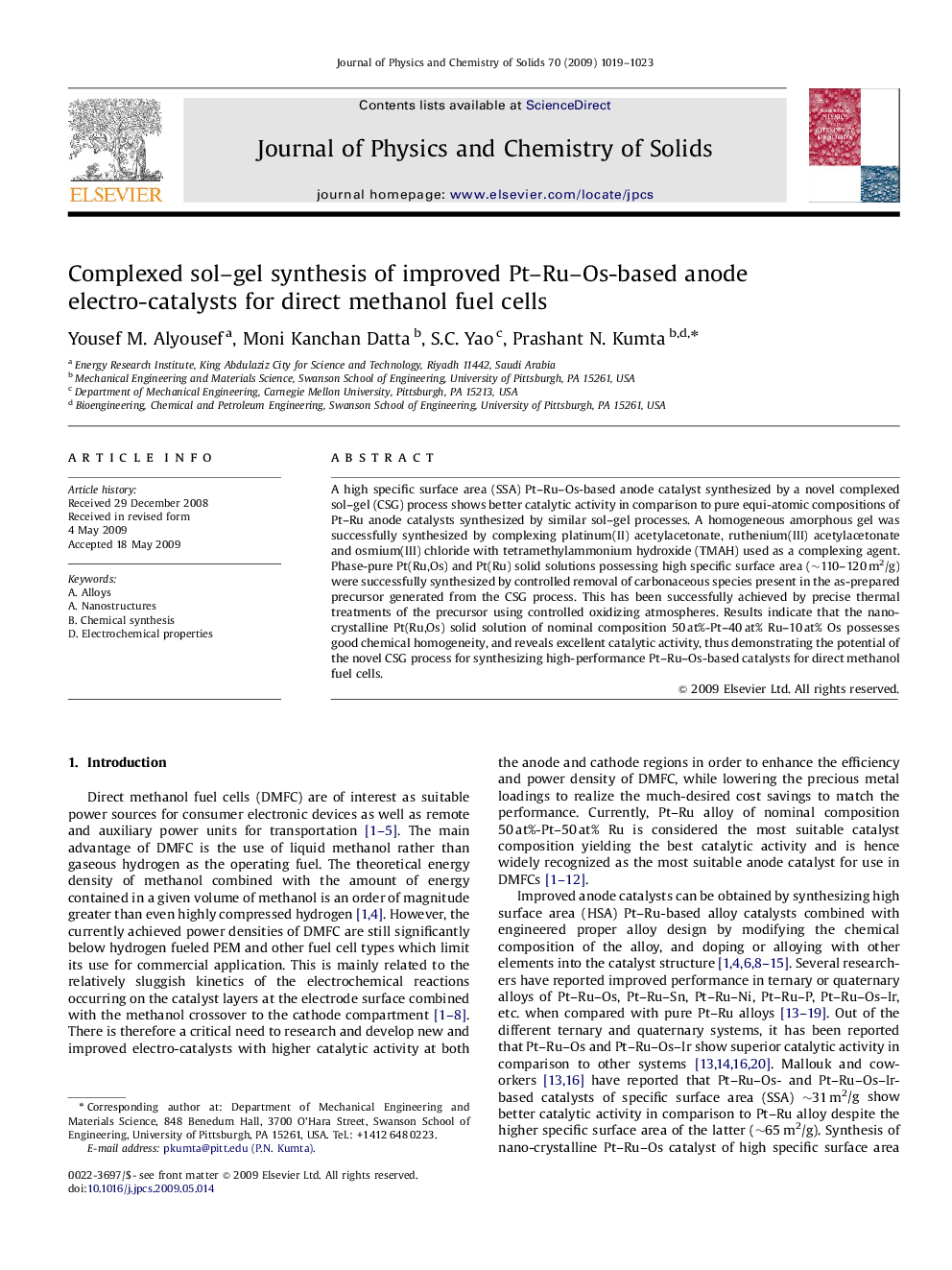| Article ID | Journal | Published Year | Pages | File Type |
|---|---|---|---|---|
| 1517801 | Journal of Physics and Chemistry of Solids | 2009 | 5 Pages |
A high specific surface area (SSA) Pt–Ru–Os-based anode catalyst synthesized by a novel complexed sol–gel (CSG) process shows better catalytic activity in comparison to pure equi-atomic compositions of Pt–Ru anode catalysts synthesized by similar sol–gel processes. A homogeneous amorphous gel was successfully synthesized by complexing platinum(II) acetylacetonate, ruthenium(III) acetylacetonate and osmium(III) chloride with tetramethylammonium hydroxide (TMAH) used as a complexing agent. Phase-pure Pt(Ru,Os) and Pt(Ru) solid solutions possessing high specific surface area (∼110–120 m2/g) were successfully synthesized by controlled removal of carbonaceous species present in the as-prepared precursor generated from the CSG process. This has been successfully achieved by precise thermal treatments of the precursor using controlled oxidizing atmospheres. Results indicate that the nano-crystalline Pt(Ru,Os) solid solution of nominal composition 50 at%-Pt–40 at% Ru–10 at% Os possesses good chemical homogeneity, and reveals excellent catalytic activity, thus demonstrating the potential of the novel CSG process for synthesizing high-performance Pt–Ru–Os-based catalysts for direct methanol fuel cells.
